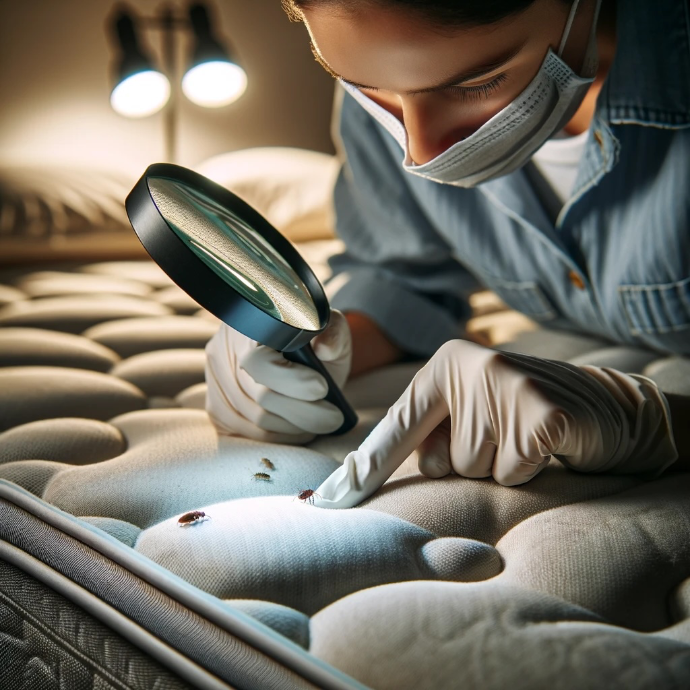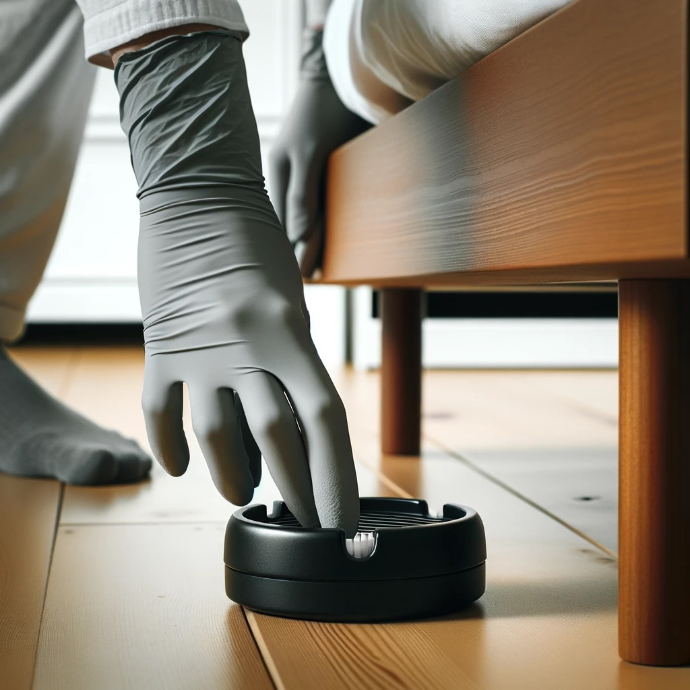1. Bed Bug Bites?
What do bed bug bites look like?
- It's tricky! Bed bug bites can easily be mistaken for other insect bites or even skin rashes.
- Look for:
- Groups or rows of bites, often on exposed areas (arms, neck, upper body).
- Small, red, itchy bumps. Some people experience more severe swelling.
Important:
Do NOT solely rely on the appearance of bed bug bites for confirmation. While the presence of bites may suggest the presence of bed bugs, they are just the first step in our recommended approach.
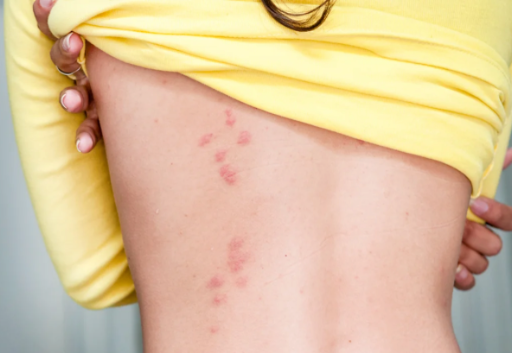

Are bed bug bites itchy?
Yes, bed bug bites typically itch. However, here's why the answer isn't always a straightforward 'yes':
- Individual Reactions Vary: Some people react strongly with intense itching, while others may barely notice the bites.
- No Itch Doesn't Mean No Bed Bugs: Even if your bites don't itch, you could still have a bed bug problem. Don't rely solely on the presence or absence of itching for identification.
Do bed bug bites show right away?
Not necessarily! It can take from a few minutes to up to two weeks for bed bug bites to show up, as some individuals have delayed reactions to the anesthetic injected by the bed bugs while feeding.
Are bed bug bites dangerous?
- Generally not! Bites don't transmit diseases and rarely cause serious health problems.
- However, they can be itchy and disrupt sleep. In rare cases, some people might experience allergic reactions.
- The biggest concern is the anxiety and stress bed bugs can cause.
What to do if got bitten by bed bugs?
- Wash the bites with soap and water to reduce the risk of infection.
- Apply an anti-itch cream or calamine lotion to soothe the discomfort. Here are two options of suggested creams you might use:


2. Inspect Visually
Visual inspection is the first thing to do if you suspect bed bugs in a room. Here is how to perform the visual inspection as a pro.
What to look for? What are the signs of bed bugs?
You will look for one or more of the following three signs:
Sign 1: Live "Adult" Bed Bugs
Flat, oval-shaped, reddish-brown insects resembling apple seeds in size and shape.
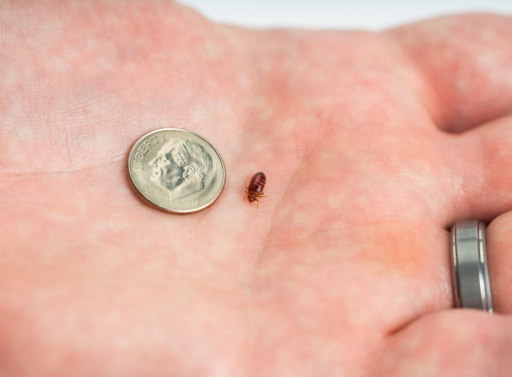
Sign 2: Black Specks
Bed bug droppings, which look like tiny black dots made with a fine-point marker.

Sign 3: Cast Skins
Pale yellow, oval-shaped, and slightly translucent shed exoskeletons.
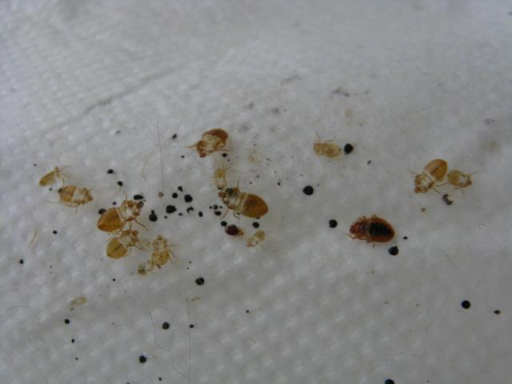
Where to look?

Primary Locations:
- Mattress seams, tufts, tags
- Box spring (especially fabric covering the underside)
- Cracks and crevices in bed frames
- Behind the headboard
Secondary Locations:
- Upholstered furniture (seams, cushions)
- Baseboards
- Areas behind pictures/wall hangings
- Electrical outlets
Other Potential Locations:
- Inside electronics
- Carpeting
- Books
- Clothing

Download Visual Inspection Checklist for Free
What if I find signs of bed bugs?
Stay calm! Bed bugs can be frustrating, but you can get rid of them. Check out our step-by-step guide for bed bugs treatment.
What if I could not find any signs of bed bugs?
No visual signs of bed bugs in your room does not mean your home is bed bug-free. You need to confirm that by using monitoring devices as the following.
Important
Visual inspections are less accurate at detecting low-level infestations; therefore, using a monitoring tool is essential (see the next step).
3. Monitor
While visual inspection is the first action to take if you suspect a bed bug bite, studies have shown that it is less accurate than using a monitoring device, especially in low-level infestations (where there are less than 20 bedbugs in the unit).
Which bed bug monitoring device to use?
Despite their affordable price, several studies have shown that bed bug interceptors are the best monitoring device for bed bug detection. Their results even beat the visual inspection conducted by pest control professionals.
For standard-size bed legs (less than 4” in diameter), we recommend the following interceptor:

For wide bed legs (Less than 5”x7”), we recommend the XL interceptor:

How to use the bed bug interceptors?
- Prep Your Bed: Move it away from walls and furniture. Bed skirts or extra bedding should not touch the floor.
- Install Interceptors: Place one under each bed leg.
- Check Regularly: Look for trapped bed bugs inside the interceptors at least once a week.
- Monitor for 4 Weeks: If no bed bugs are found after this time, you can remove the interceptors.

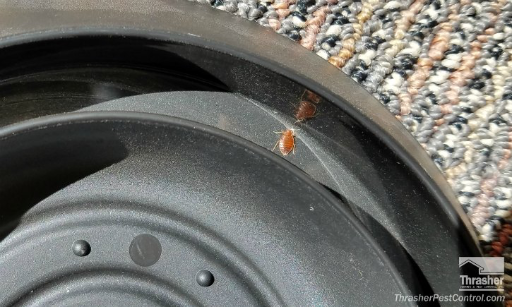
What if the interceptors don't fit my bed’s legs?
Don't worry; here's a simple trick:
1. Place an empty toilet paper roll (tube core) vertically in the middle of the interceptor. Use adhesive or tape to secure it in place. This will act as a decoy bed leg to attract bed bugs.
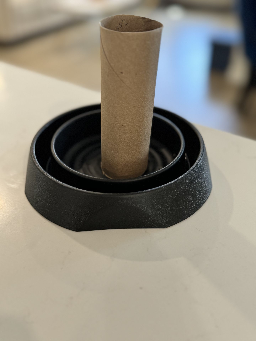
2. Place these modified interceptors right beside each bed leg. Studies show that bed bugs are attracted to vertical objects resembling furniture legs.

Can I still sleep in the room with suspected bed bugs?
Yes! This is important during monitoring: Studies have shown that human breath during the night stimulates the bed bugs to go out of their nest seeking a host; this is what we want to get them trapped in the interceptors.What do the monitor results mean?
- No bugs after 4 weeks (and no visual signs): Likely not bed bugs. See a doctor if the skin issue persists.
- Bugs in the interceptor: It's time for our science-proven treatment approach!

